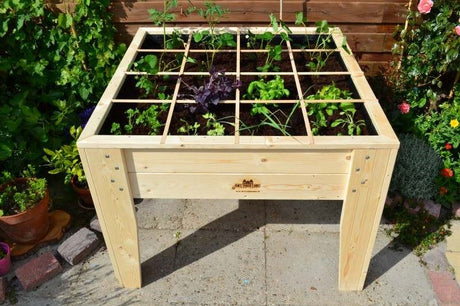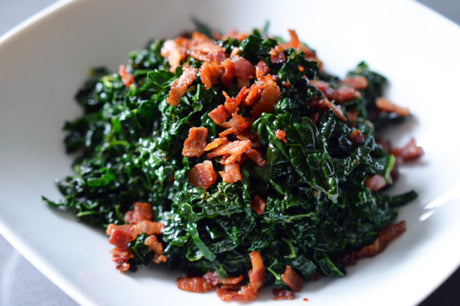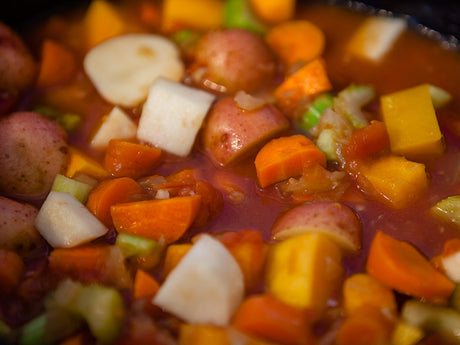Table of Contents:
Introduction to sowing spinach
The Latin name for spinach is spinacia oleracea . It's a fast-growing plant that you can always find a spot for in your vegetable garden. It shrinks considerably when cooked, so you'll need quite a bit. You can also eat the young leaves in a salad, so you'll need much less spinach. You can grow spinach year-round, as long as you choose the right types of spinach seeds . This article explains everything about sowing spinach .

sowing spinach - a healthy plan
Crop Description - What is Spinach?
Spinach belongs to the amaranthine family. Our beets and orache also belong to this family. There are two types of spinach: the sharp-seeded (Spinacia oleracea spinosa) and the round-seeded (Spinacia oleracea inermes). Sharp-seeded spinach grows very quickly and is ideal for early cultivation. Round-seeded varieties take a little longer and are therefore more suitable for the warmer months. You also encounter New Zealand spinach (Tetragonia expansa) and winter spinach (Rumex patientia), but these are completely different families and taste different. So you see, only Latin names can tell you whether you're dealing with spinach.

sowing spinach with round seeds

sowing spinach with sharp seeds
The growth habit of spinach
Spinach is an annual crop. Sown in March, it will bolt in May/April and produce seed in July/August. Therefore, you can easily harvest your own spinach seeds. Leave a few plants and you can harvest next year's spinach seeds in August. Spinach is a long-day plant and will bolt with at least 15 hours of daylight; summer varieties need even longer days to bolt. Therefore, you should sow spring varieties early in the year; you'll have less trouble with bolting, and spinach sown in the fall usually won't bolt at all. Spinach has various leaf shapes. Early varieties have narrow, pointed, and upright leaves. Summer varieties have rounded leaves. The roots are thin, but can reach a length of 140 centimeters, concentrated in the first 30 cm of the soil.
In which soil to sow spinach
Spinach grows very quickly and therefore places high demands on the soil. It should be moist, fertile, and calcareous, preferably sulfurous or light clay. The soil should also have a good humus content and be well-drained. Fortunately, you can grow spinach in other soil types, but they will require a little extra attention. If you have a light soil with sufficient humus, you can start growing spinach very early (early January!). This is because sandy soil warms up faster than, for example, clay soil.

sow spinach directly

Sowing spinach in trays is sensitive to soil structure, so be sure to till the soil carefully. For those who dig: dig early and crumble and level the seedbed well later. For those who don't dig: add plenty of organic matter before winter and till thoroughly after winter.
Water management in spinach is very important
For spinach, it's important that the soil is well-drained but still retains enough water. They don't like sludgy, hard soil or dry, sandy soil. So water sandy soil generously. For sludgy soils, add plenty of organic matter to improve drainage, otherwise it might not drain. Raised beds with lighter soil work well on heavy clay. Spinach appreciates a little extra water just before harvest, as this keeps the leaves nice and fresh.
Spinach cultivation under scrutiny
Sow spinach directly in open ground
Broadcast or row sowing
Spinach is sown broadcast or in rows. When broadcasting, the soil must first be leveled thoroughly, then the seeds must be evenly distributed and lightly incorporated. This is best avoided if you have a lot of weeds. The spacing of the seeds isn't so important; the strength of the seeds will survive (I broadcast them so that I have 2 to 3 cm around each seed). The yield with broadcasting is higher than with row sowing. With row sowing, the rows should be approximately 5 to 7 cm apart. Row sowing allows for easier weeding and also allows for better seed distribution. You can place one seed every 2 to 3 cm in the row. The earlier the crop is grown, the closer this spacing can be. If you sow the seeds at the same depth everywhere, the spinach will emerge evenly and can be harvested simultaneously.
Pre-sowing spinach
In some circumstances, you can also pre-sow spinach. You can use 73-hole trays and then plant out the cells when the second true leaves appear. Pre-sowing in trays is very useful when garden conditions aren't yet ideal (too cold, too wet, or because there are still vegetables in the bed where you want to grow spinach). The disadvantage of pre-sowing in trays is that it requires more work, but an advantage is that, as mentioned earlier, you can wait for the right conditions to develop, but also that you can more easily adjust the germination conditions and select the best-germinated plants. I do this when I'm building my winter vegetable garden greenhouse. Here's a video of how I start my winter vegetable garden.
Cultivation methods of spinach
To grow spinach almost year-round, different growing periods are distinguished. As always, it's important to choose the right variety for each growing season.
Very early cultivation
This crop runs from late December to late January. The Broadleaf Sharp Seed variety is almost always used for this crop. It needs to be sown quite thickly because the plants then grow close together, allowing for an even earlier harvest. Harvesting can take place sometime in March/April. With this crop, you are, of course, very dependent on the winter weather. Also, sow this early only in light, sheltered soil, or in a corner of the garden where the first winter sun always reaches. Covering the spinach with fleece will help keep out the worst of the winter weather. This is also the time to sow spinach in a greenhouse or flatbed.
Early cultivation
This crop is sown in February and harvested in April. You can still choose Broadleaf Sharp Seed .
Spring cultivation
Spring cultivation begins in early March and continues until April 20th. You can no longer sow Broadleaf Spinach at this time, as the higher temperatures make spinach very susceptible to the fungal disease Wolfsbane. Therefore, from this time onward, you should choose round-seeded varieties, which should be resistant to as many Wolfsbane varieties as possible; this is always indicated on the seed packet. These varieties are also fast-growing and bolt less quickly. These varieties are very suitable for spring cultivation: Bazaroet , Nores and New Zealand Spinach

harvesting spinach
Summer cultivation
April 21st to July 31st: use primarily round-seeded varieties that are wolf-resistant and suitable for summer. These will also grow somewhat slower and should be sown more widely. These varieties are very suitable for summer cultivation: Bazaroet , Nores and New Zealand Spinach
Autumn cultivation
Sowing from August until September 15th is called autumn cultivation. You can't use the same varieties as in spring, because autumn cultivation takes place when the days are getting shorter, while spring cultivation takes place when the days are getting longer. Check the package carefully to see which varieties are suitable. The autumn spinach variety from Plukkers is called Spinazie Securo Wolfresistent A+B . Because autumn weather is often wet, always choose wolf-resistant varieties.
Winter cultivation
Sow these in the week of September 15th. You need to choose special varieties for this, ones that have strong roots and regrow quickly in spring. The perfect variety for this crop is Spinach Winter Giant Viroflex. Due to the long, wet winters, many plants will rot, and it's actually less suitable for use in a maritime climate with mild and wet weather. Personally, I've been able to eat beautiful spinach very early in the year with a winter crop, but I've also lost all the spinach. Because this is a period when there are few vegetables in the garden, you can always try it. By September 15th, the early potatoes have usually been harvested, and you'll have room for your winter spinach .
Fertilization in the spinach bed
Nitrogen or the letter N
Spinach needs a heavy fertilizer, primarily nitrogen and potassium. On light soils, spinach prefers an extra application of organic fertilizer with manure in the fall. If you have heavy soil, a green manure is highly recommended. Just started a vegetable garden and dug up your lawn? Then you can grow spinach perfectly! Spinach is a leafy vegetable and grows quickly, so it needs access to nitrogen quickly. 1.7 grams of nitrogen per m² per day! That's why sufficient water is so important.
Too much nitrogen is not good for the plants and increases the nitrate content in the leaves. They will then have absorbed more nitrogen than they need to produce proteins. This happens more often in autumn than in spring or summer. If you harvest the spinach cold, less nitrite will be produced than if you harvest it when the leaves are warm! In addition to your basic amount of nitrogen at the beginning of the growing season, also apply a fast-acting nitrogen fertilizer spread throughout the growing period! Nettle manure contains a lot of nitrogen and you can even make it yourself. If you make the nettle manure at the same time as sowing the spinach, it will be ready when the spinach needs the extra nitrogen. You can also add some chicken manure to the manure to further increase the nitrogen content. After applying the manure (make sure to dilute it!), you must spray it regularly, otherwise there's a risk of burning the spinach leaves. You can also find blood meal on this website and use it for fast nitrogen fertilization. Nitrogen deficiency is evident when leaves are no longer a beautiful green, but light green or even yellow and remain small. The plants will then quickly bolt (flower) and no longer produce leaves.
Phosphate or phosphorus
Spinach doesn't require much phosphate or phosphorus. Most vegetable gardens usually have sufficient phosphate in the soil, so it doesn't require any additional attention.










